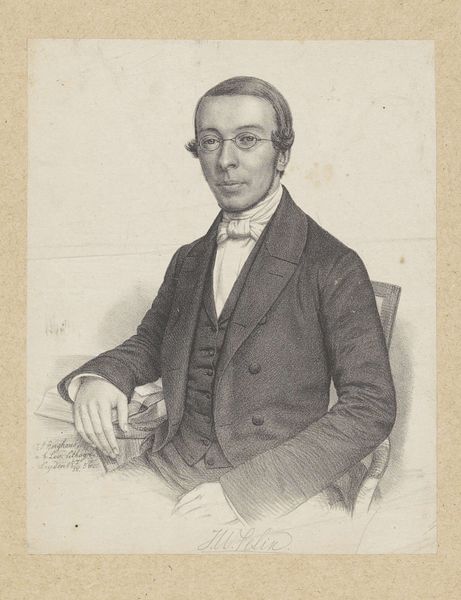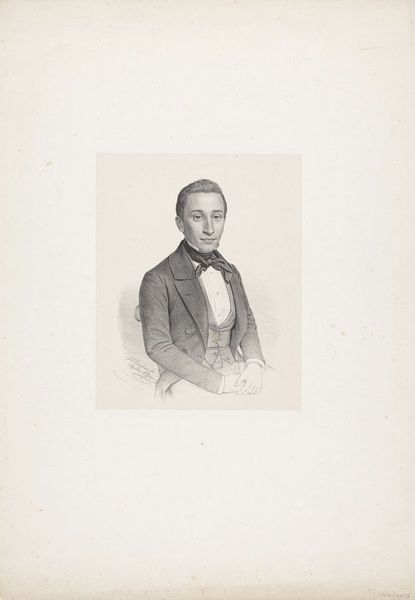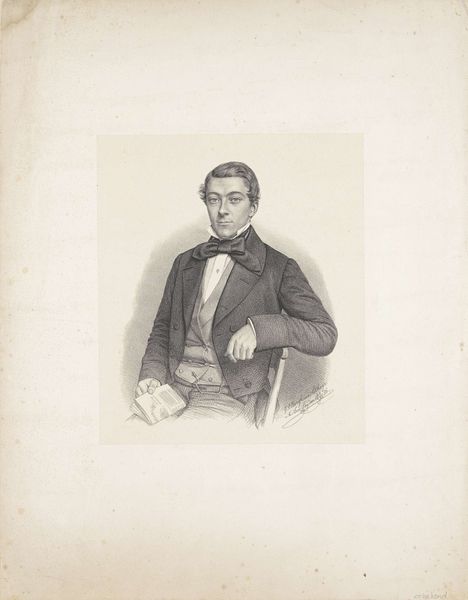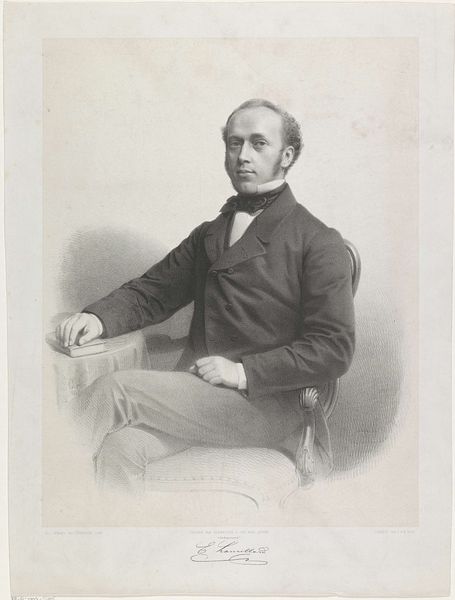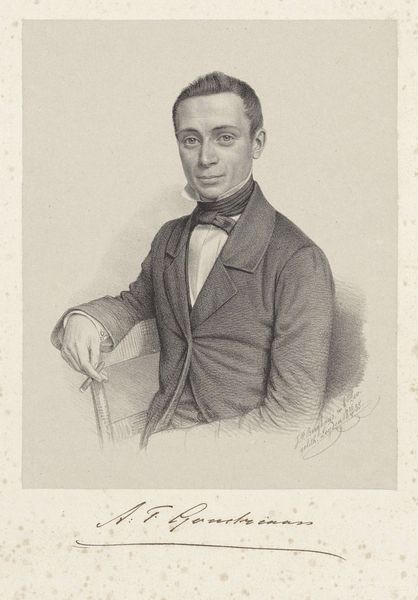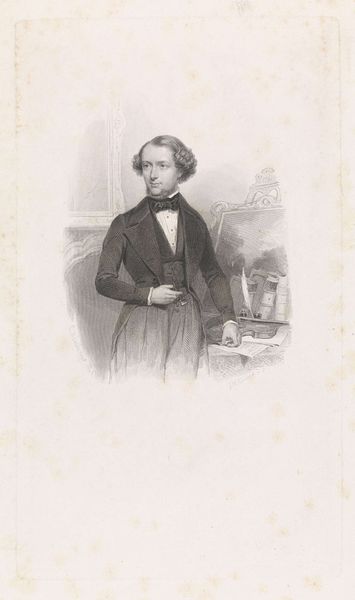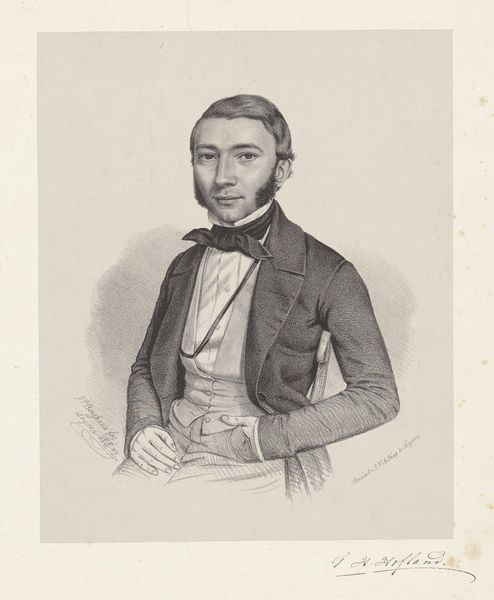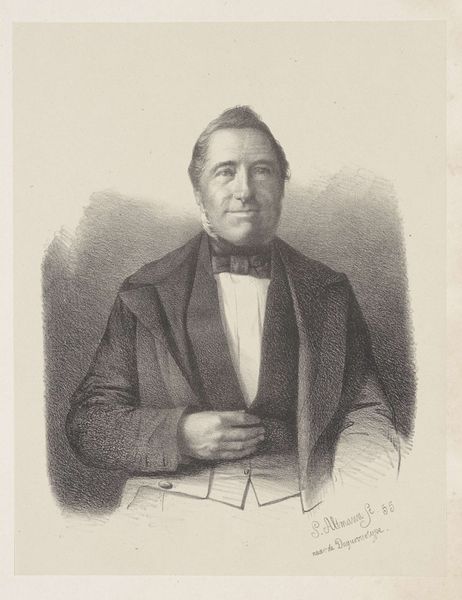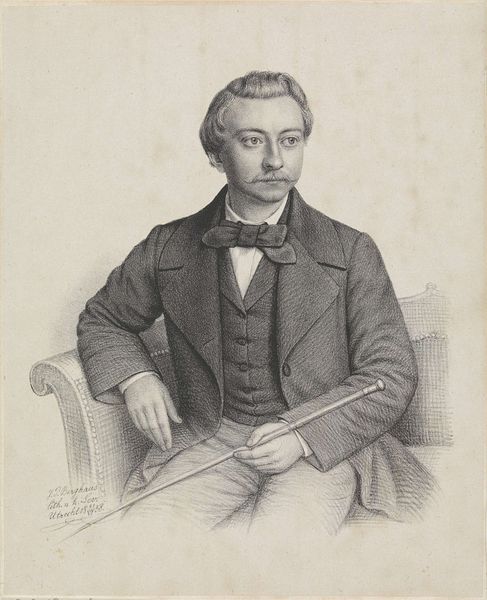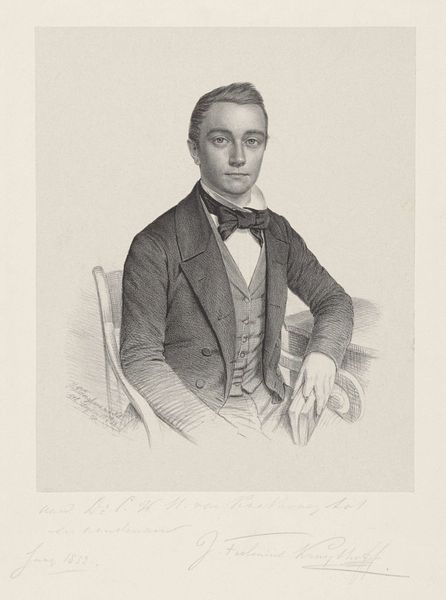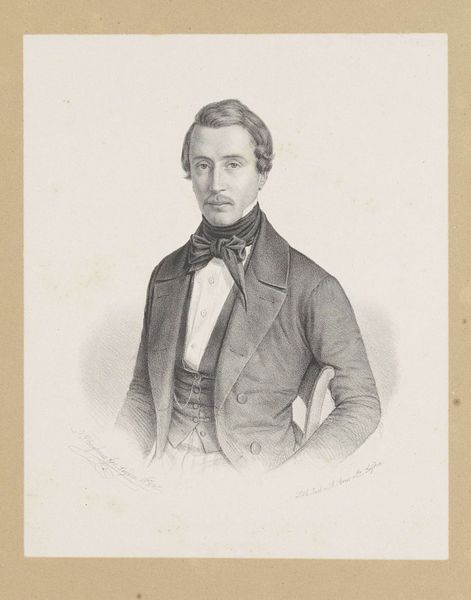
drawing, pencil
#
portrait
#
pencil drawn
#
drawing
#
aged paper
#
toned paper
#
light pencil work
#
pencil sketch
#
personal sketchbook
#
portrait reference
#
pencil drawing
#
pencil
#
portrait drawing
#
pencil work
#
academic-art
#
realism
Dimensions: height 269 mm, width 191 mm
Copyright: Rijks Museum: Open Domain
Editor: This is "Portret van J.C. Beth," a pencil drawing made sometime between 1852 and 1857 by Johann Peter Berghaus, now at the Rijksmuseum. What immediately strikes me is the artist's delicate handling of the pencil, achieving a remarkable level of detail. What do you notice when you look at this portrait? Curator: Focusing purely on the formal elements, the subtle gradations of tone are particularly noteworthy. Observe how Berghaus uses hatching and cross-hatching to model the figure, creating a sense of depth and volume. The artist masterfully manipulates light and shadow to define the subject’s features. Did you also observe how he uses light pencil work? Editor: I did. The light pencil work adds an interesting air of ethereality, as though the subject could fade away any moment. The detail around the eyes and mouth are strikingly rendered. Can we interpret anything specific from that focus? Curator: I concur that those features stand out through line work. The eyes serve as a focal point, directing the viewer's gaze and establishing a connection with the subject. Notice also how Berghaus has framed Beth within the picture. The chair, acting as framing element, seems secondary. Berghaus seems more invested in portraying Beth in exacting detail. What purpose may that framing serve, do you think? Editor: Maybe it’s about isolating him from a specific context, emphasizing the essence of the individual rather than any narrative. I’m starting to see the way the lack of background almost forces us to focus on form, on line and shading and structure, rather than story. Curator: Precisely. By isolating these individual elements, we gain a richer sense of Berghaus' achievement with his medium. Editor: It's amazing how much information you can glean just by looking at the composition and technique. Curator: Indeed. Approaching a work through its intrinsic elements often unveils layers of meaning and artistic intention that might otherwise go unnoticed.
Comments
No comments
Be the first to comment and join the conversation on the ultimate creative platform.
